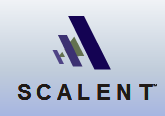DataCenterKnowledge posted a video presentation today we would love to share with you too. It features Dante Malagrino of Cisco and Ed Bugnion of Nuova Systems with an explanation of how data center managers can use the new Cisco Nexus 5000 Series switches to optimize their virtualization efforts (Cisco recently introduced the 7000 Series). Prior to joining Cisco, Bugnion was a co-founder and chief architect of VMware.
data center
Scalent And Enigmatec Team Up
Enigmatec, provider of run book automation (RBA) software, and Scalent Systems, provider of infrastructure virtualization software for large data centers, today announced an integration partnership to enable policy driven automation of server repurposing in the data center.
The partnership reportedly combines policy-based IT process automation from Enigmatec and server repurposing from Scalent to deliver an integrated software solution to dynamically place compute resources where and when they are needed in the data center. This implementation of real-time infrastructure should dramatically lower data center management operations costs while increasing flexibility in the face of business need change.
The Enigmatec Management System (EMS) continually monitors all levels of a multi-tier application stack for changes in availability or demand. When EMS detects a failure or load spike, the system orchestrates the reallocation of resources to the appropriate users and applications, leveraging Server Automation software to ensure that all resources are maintained at required release, patch and configuration levels. EMS also provides full lifecycle management of shared virtual resources including decommissioning, archiving and returning resources back to a server pool.
Scalent allows data center operators to rapidly change entire systems and associated topologies, including which servers are running, what software is running on them, and how they’re connected to network and storage. Scalent does this in real-time without requiring physical changes to the infrastructure. Scalent V/OE software enables customers to take their data centers from “dead bare metal” (powered off hardware with no software installed) to live (newly deployed or restored), connected (to network and storage) servers, in five minutes or less.
“Scalent’s server repurposing solution gives IT operations the ability to dynamically change their server environment,” said Duncan Johnston-Watt, Chief Technology Officer, Enigmatec. “Integrating Scalent with Enigmatec takes this to its logical conclusion – using run book automation to orchestrate their data center virtualization solution delivers a policy-driven infrastructure which automatically adapts to meet changing business requirements.”
Microsoft Heading Forward With Container-Based Data Centers
Not entirely related to virtualization as such, but hugely relevant as far we’re concerned: Microsoft is getting serious about embracing containers as the key to building scalable, energy-efficient cloud computing platforms. The company’s bold move is an affirmation of the potential for containers to address the most pressing power, cooling and capacity utilization challenges facing data center operators. Microsoft’s new Chicago facility is part of the company’s fleet of next-generation data centers being built to support its Live suite of “software plus services” online applications.
DataCenterKnowledge quotes Microsoft Director of Data Center Services Michael Manos:
“The entire first floor of Chicago is going to be containers. This represents our first container data center. The containers are going to be dropped off and plugged into network cabling and power.” The second floor of the immense facility will be a traditional raised-floor data center, Manos said. “It’s a bold step forward. We’re trying to address scale with the cloud level services. We were trying to figure the best way to bring capacity online quickly.”
Manos added that the facility will accommodate between 150 and 220 shipping containers, which will be shipped and dropped off by trucks. That approach led Microsoft to consult with parking lot operators to address the design logistics of enabling large trucks to navigate within the facility.
In 2006, Sun Microsystems introduced Project Blackbox (now the Sun MD S20), the first effort at a “data center in a box” incorporating a high-density computing environment into a 20-foot shipping container. The containers can travel on trains, ships or trucks.
We were thinking about adding a joke about containers containing containers (you know, the software ones), but it’s getting late and we’ve had quite a busy, interesting day already.
On Virtualization and Server Consolidation
Insightful post by Arthur Cole over at ITBusinessEdge about server consolidation and virtualization. Cole argues that server consolidation done the right way remains the primary driver for most data centers.
But as those who have already taken the virtual plunge have no doubt realized, consolidating servers is not just a simple matter of powering up the virtualization layer and then pulling equipment out of racks. There is a long list of factors to consider with any centralization project and a wide range of land mines that need to be avoided to prevent service failures.
Cole refers to four interesting articles about server consolidation:
- Server Virtualization and Consolidation Require More Resiliency (Bill Hammond, ITJungle)
- Virtual Management, Virtual Mess (Kurt Westerfield, CTO ManagedObjects)
- Thoughts on Server Consolidation Methodologies (IT consultant Brad Harris)
- Opinion: 6 keys to virtualization project success (Jim Damoulakis, Computerworld)
Read the whole article here.

